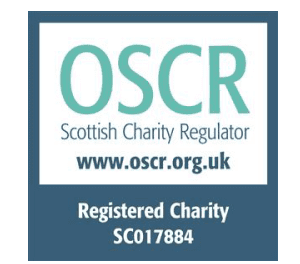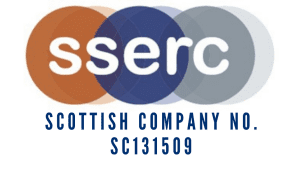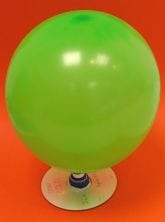 This model, shamelessly pinched from a children’s TV programme, is a fun way to get pupils talking and thinking about the force of friction.
This model, shamelessly pinched from a children’s TV programme, is a fun way to get pupils talking and thinking about the force of friction.
Making the Hovercraft

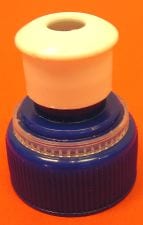 Stick a sports bottle top (the sort that can be popped open – see pic right), over the hole in an old CD. We used a low-melt glue gun but also found UHU “White Tack” strong enough. Close the bottle top. Inflate a balloon and stretch it over the top.
Stick a sports bottle top (the sort that can be popped open – see pic right), over the hole in an old CD. We used a low-melt glue gun but also found UHU “White Tack” strong enough. Close the bottle top. Inflate a balloon and stretch it over the top.
Here’s one I made earlier. A balloon hovercraft
Place the hovercraft on a smooth, flat surface. Pop open the top and give the model a push. It should slide freely.
Health and Safety
It is quite acceptable to allow children to use glue guns provided that there is close supervision, particularly if hot-melt guns are used. Though not quite as effective, low-melt guns are inherently safer. As an aside, glue guns should only be bought from reputable suppliers. There are some cheap but electrically suspect devices out there. Balloons should not be shared for hygiene reasons, and beware of choking hazards. Balloon pumps are a better alternative if practicable. See here for designs and prices.
Even apparently smooth surfaces are rough at a microscopic level

Background
Friction is a force that acts against movement and occurs when one surface moves across another. It arises because even smooth surfaces, at a microscopic level, are covered with peaks and pits (figure). Friction can be lessened by reducing the contact between the two surfaces. This can be done using rollers, ball bearings, oil, grease or, as with our model, a cushion of air.
Teaching Approach
By the time friction is introduced, the children should know that a force is something that can produce a change in speed, shape or direction. If you then slide a book across a desk, pupils should be able to say that it slowed down- a change in speed- because of a force. Name the force as friction. Some pupils may have heard of friction burns or associate friction with rubbing. Discuss why friction comes about and how it can be reduced. They should appreciate or learn through investigation that a smooth surface (glass) offers a smaller force than does a rough surface (sandpaper). They should be able to offer a fair test method of investigation.
Ask the children where they might previously have seen objects floating on a cushion of air e.g. the pucks on air hockey machines, hovercraft. Watch a robot playing air hockey.
Demonstrate the balloon hovercraft. Get them to build one in groups. Ask how the hovercraft reduces friction. You can then ask the “rich” question: “What would it be like coming to school wearing hoverboots?” Pupils should discuss this in groups and feed back. Most groups will get as far as talking about sliding easily along the pavement but may need challenged to come up the idea that it would be difficult to stop once you were moving and indeed starting off would be hard because there would be no grip. These are important concepts because friction is often presented as the “baddie”, responsible for wasting energy in cars etc. In fact, we could not walk, cycle or drive without friction. See here for more on interactive learning using collaborative techniques (TSEC teaching strategies).
Going Further
Balloon hovercrafts can be used for investigative work. One school had a hovercraft race where the models were released one by one down a ramp and the distance they travelled before stopping was measured. It was very tricky to do a scientifically fair test but this in itself raised plenty of useful discussion, with one pupil suggesting that everybody’s balloon got the same number of puffs from a balloon pump.
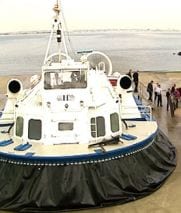

This Summer (2007), 32,000 passengers used the Forthfast hovercraft service between Kirkcaldy and Portobello, near Edinburgh
A local authority developed an enterprise challenge based on balloon hovercrafts. Pupils were put in charge of a scientific toy company and told that they were going to be selling the models. Just before the balloon hovercrafts were due to be launched, the story went, a rival company stole the plans. Their challenge was to make balloon hovercrafts that were better, more attractive or more fun than the ones from the thieves’ company.

